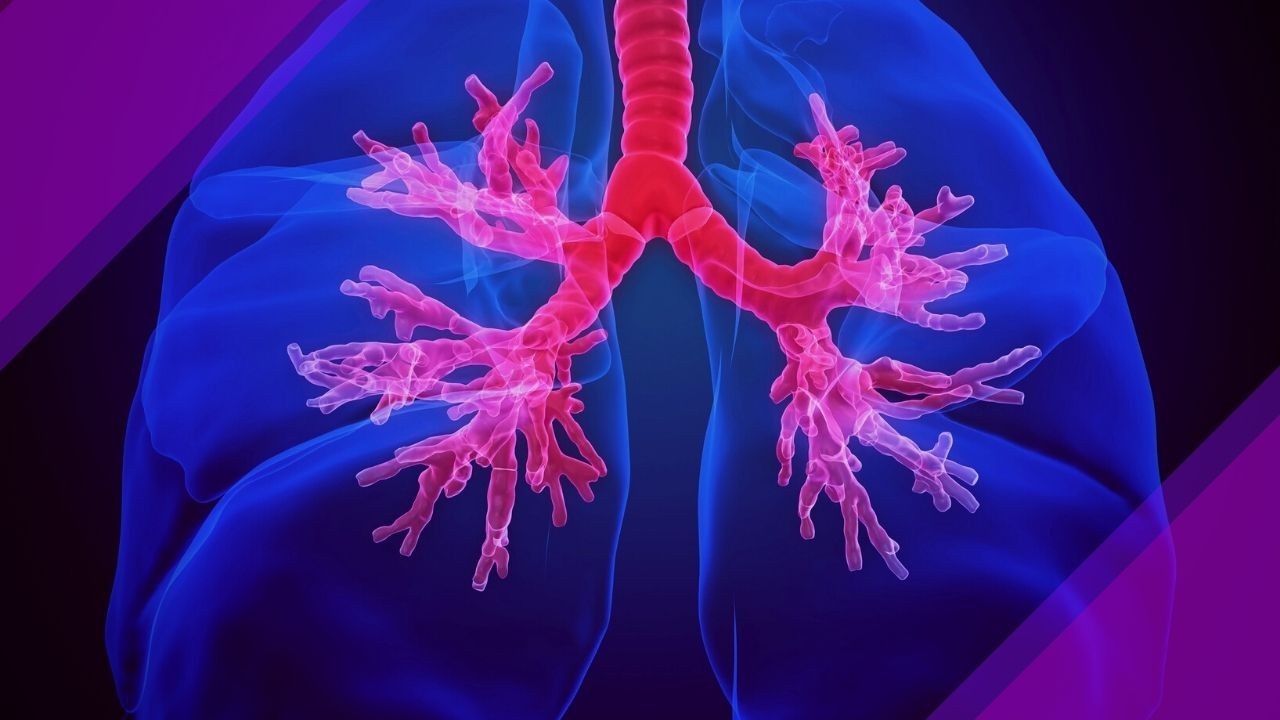
How to Maintain Lung Capacity During Menopause
Jun 29, 2022Research finds menopause may accelerate our age-related decline in lung function.
By Selene Yeager
As active women, we need all the oxygen our heart and lungs can provide to our hard-working muscles. But some women may find that their lungs aren't working quite as well as they used to as they go through the menopause transition. If you're one, it's not in your head: it's in your lung capacity.
Menopause is associated with an accelerated decline in lung function, according to research, including a study published in the American Journal of Respiratory and Critical Care Medicine that alarmingly reported that the decline in certain elements of lung function was comparable to smoking 20 cigarettes a day for 10 years.
“The decline in lung function may cause an increase in shortness of breath, reduced work capacity and fatigue,” said researcher Kai Triebner at the Department of Clinical Science, University of Bergen (UiB), Norway in a press release.
To draw these conclusions, the researchers analyzed data from 1,438 women enrolled in the European Respiratory Health Survey. The women in the study ranged in age from 25 to 48 at enrollment, and none were menopausal when the study began. They were followed for 20 years and during that time most went through the menopausal transition or became postmenopausal
To test lung function as it relates to menopause, the researchers examined two factors: forced vital capacity (FVC), which is a measure of lung size, and forced expiratory volume (FEV), which is a measure of lung function based on how much air you can push out of your lungs in one second.
Lung function naturally declines with age, but it appears to pick up steam during the transition to menopause. Both lung size and FEV declined in women going through the menopausal transition and after menopause, beyond what would be expected through the normal aging process.
For example, women in perimenopause lost about 10.2 more millilitres of forced vital lung capacity each year compared to their pre-menopausal peers. Postmenopausal women lost about 12.5 millilitres more per year.
The decline in lung function as measured by forced exhalation was comparable to smoking 20 cigarettes (i.e. a pack) per day for two years, and the decline in lung size was similar to smoking 20 cigarettes per day for 10 years.
Speaking of smoking, there are some issues with this study that are worth mentioning. First among them, there were a lot of current and former smokers in the study group. Less than half of the group — just 45 percent — were “never smokers.” The rest were all former or current smokers. Not surprisingly, current and former smokers had higher age-related declines and higher menopause-related declines than those who had never smoked.
The study also didn’t take exercise into account. It’s possible none of the women in the study did any purposeful exercise, let alone had athletic pursuits, past or present. Women taking any hormone therapy were not included in the study.
This study is observational, so it doesn’t prove that menopause causes lung function decline and/or breathing problems. That said, the researchers did have some theories as to why this lung function decline seemed to be linked to the menopausal transition.
“There may be several possible explanations for these findings. Menopause brings hormonal changes that have been linked to systemic inflammation, which itself is associated with lung function decline,” Triebner said in the release.
“Hormonal changes are also implicated in osteoporosis, which shortens the height of the chest vertebrae and may, in turn, limit the amount of air a person can inhale,” he notes.
It’s also worth noting that this isn’t the first study to reach these conclusions. A 2008 study of 4,259 women ages 45 to 56 (again, not taking any hormone therapy) found that women who had not had a period in six months had lower FEV scores and more respiratory problems than those menstruating regularly. These results remained even when the researchers looked at participants that had never smoked.
A 2018 research analysis on the topic concluded that the “findings generally support an association between menopause and clinically significant reductions in lung function.” The incidence of new-onset asthma also increases during menopause, as does the incidence of asthma flare-ups.
Generally speaking, for what it’s worth, women may fare better than men in age-related decline in lung function. A 2019 systematic review of 16 studies examining normal lung function decline in aging adults found higher rates of absolute lung function decline in men compared with women.
Strategies for Better Breathing
If you're finding yourself more breathless than usual, you're not alone. Members in the Hit Play Not Pause community have noticed it too:
I’ve run every day for the last 6 years: 10 Halfs, 2 full marathons. All of a sudden after peri to menopause I can’t even run a mile without stopping or doing walk intervals. Literally can’t breathe. I have asthma but it doesn’t feel like that. Just have no energy or strength and can’t breathe. It’s ridiculous.
I believe this 100%. I already had breathing issues before which seem to be enhanced along with worsening asthma.
I noticed my VO2 max estimated by my Apple Watch has been slowly tanking despite the same exercise routine compared to a year ago. I hit full menopause a year ago in September. Not a coincidence, I think.
I started having asthma symptoms at the same time as early perimenopause. I had been active and athletic for years, but I started having breathing problems during harder bike rides. Now, I take Singulair and often take 2 puffs of a rescue inhaler before I run. It helps a lot.
What's an Active Menopausal Woman to do?
• Get checked out. First and foremost: Do not assume that any new breathing issues are a result of menopause. About 20 percent of people who die from lung cancer in the U.S. every year have never smoked. If you’re experiencing a recent and/or marked decline in lung function and/or are having breathing problems, talk to a doctor (preferably one who understands both active women and menopause).
• Prioritize lung health. There are not likely many smokers here, but if you still light up, even casually, finding a way to stay smoke-free is key to better lung function in the short and long term. If you have any diagnosed lung conditions, take your meds to help maintain your lung function.
• Investigate MHT. Women taking menopausal hormone therapy were excluded from the 2016 American Journal of Respiratory and Critical Care Medicine study. The authors note in the paper that this is an area that should be studied further, as some hormone therapy regimens seem to be associated with higher lung function in postmenopausal women. According to a study of 3,713 women presented by Triebner at the 2017 European Respiratory Society International Congress and reported in Pharmacy Times, women who took hormone therapy for two years had better lung function compared with women who never took MHT.
• Keep those muscles (and bones) strong. Lung function is another reason to strength train. By keeping your skeleton strong through strength training, you can prevent the bone loss and shortening of the chest vertebrae that can come with osteoporosis. Strength training also helps keep your muscles strong, including those in your core that help improve your respiratory strength. This is especially important during the menopausal transition when we’re prone to losing muscle mass and strength as sex hormones dwindle.
• Add breathing exercises to your routine. It's possible to train your "respiratory strength," says Paul Davenport, Ph.D., pulmonary researcher and professor at the University of Florida in Gainesville, who explains that by conditioning the muscles that support your breathing, it's easier to take deeper breaths and exchange more oxygen in your lungs. His research found that when women and men blew into a special “inspiratory muscle trainer” 24 breaths a day, 5 days a week for 4 weeks, they increased their respiratory muscle strength by 50 percent, which equals a performance gain of about 2 to 5 percent.

As might be expected, "there are no specific studies examining respiratory muscle training and post-menopausal healthy, active women," notes Kathleen Davenport, MD (Paul's daughter), who is a physiatrist at Hospital for Special Surgery (HSS), Florida. "That being said, in sports medicine our mantra is that any muscle can be strengthened, and it would make logical sense that respiratory muscle strengthening could theoretically help breathing symptoms at any age, and specifically during periods of perceived loss of function," she says.
You can also practice these simple breathing exercises recommended by the American Lung Association that are designed to improve lung function. Practice both exercises for about 5 to 10 minutes every day.
Pursed lip breathing Breathe in through your nose and breathe out at least twice as long through your mouth, with pursed lips.
Belly breathing Breathe in through your nose and concentrate on making your belly "fill up with air," so it rises. Then breath out through your mouth at least two to three times as long as your inhale.
Yoga also can be an excellent breath practice. A 2019 study on 28 adults, with an average age of 53 and mostly women, found that participating in a 70-minute yoga session once a week improved overall respiratory function after eight weeks.
Get Feisty 40+ in Your Inbox
We hate SPAM. We will never sell your information, for any reason or send you emails that suck!

